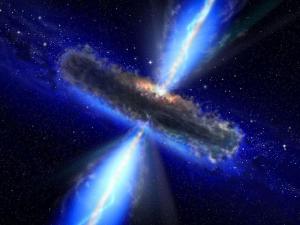Blog
Five by Five
7 July 2015
 Paolo Padovani, ESA, NASA, AVO
Paolo Padovani, ESA, NASA, AVOMost galaxies have a supermassive black hole in their center. Some of these we can observe directly, or in the case of the supermassive black hole in our galaxy through the motions of nearby stars. But many supermassive black holes are surrounded by gas and dust, and so aren’t easily observed. But new observations from NuSTAR has peered through the dust in five galaxies to observe their supermassive black holes.1 NuSTAR is an x-ray telescope, so it’s capable of detecting the kind of high-energy x-rays that can penetrate the dust surrounding a supermassive black hole. Using data from the satellite, the team was able to detect five black holes. While this approach only works for “active” black holes that emit lots of x-rays, it allows us to verify that black holes exist in these galaxies, and may help explain why some black holes are so shrouded in dust while others are not.
This method also allows us to confirm some of the indirect methods we’ve used to infer the presence of black holes in a galaxy. It means our models are on the right track. Or you could say our models are five by five.
Lansbury, George B., et al. “NuSTAR reveals extreme absorption in z< 0.5 TYPE 2 quasars.” The Astrophysical Journal 809.2 (2015): 115. ↩︎